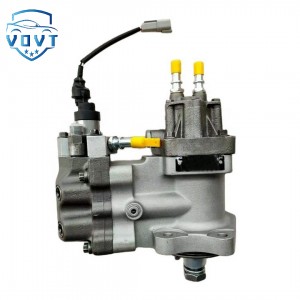Diesel Fuel Injection Pump 476-8769 For CAT Engine Auto Engine Part
products description
| Reference Code | 476-8769 |
| MOQ | 1 PCS |
| Certification | ISO9001 |
| Place of Origin | China |
| Packaging | Neutral packing |
| Quality Control | 100% tested before shipment |
| Lead time | 7~15 working days |
| Payment | T/T, Western Union, Money Gram, Paypal, Alipay, Wechat |
Oil pump classification
The oil pump is a mechanical device used to transport and pressurize oil. It is widely used in many fields. The following is an introduction to the characteristics and application scenarios of different types of oil pumps:
Classification by working principle
Gear pump
Working principle: It is mainly composed of active gears, driven gears, pump bodies, etc. The active gear drives the driven gear to rotate. In the suction chamber, the gears gradually disengage to form a local vacuum, and the oil enters the pump under the action of atmospheric pressure; in the discharge chamber, the gears gradually enter the meshing, and the oil is squeezed out.
Features: simple structure, reliable operation, low price, strong self-priming ability, but large flow and pressure pulsation, high noise.
Application scenario: Commonly used in hydraulic systems of machine tools, engineering machinery, agricultural machinery, etc., and can also be used to transport viscous media such as lubricating oil and fuel.
Vane pump
Working principle: It is composed of rotors, stators, blades and other components. When the rotor rotates, the blades slide close to the inner surface of the stator under the action of centrifugal force and pressure oil, and the volume between adjacent blades changes. The volume in the suction area increases to absorb oil, and the volume in the pressure area decreases to pressurize oil.
Features: uniform flow, low noise, smooth operation, but complex structure, sensitive to oil contamination.
Application scenarios: widely used in hydraulic systems with high requirements for working stability and noise, such as precision machine tools, injection molding machines, hydraulic elevators, etc.
Piston pump
Working principle: The plunger makes reciprocating motion in the cylinder hole to change the volume of the sealed working chamber to achieve oil suction and oil pressure. When the plunger extends outward, the volume of the working chamber increases to absorb oil; when the plunger retracts, the volume of the working chamber decreases to pressurize oil.
Features: high pressure, high efficiency, convenient flow adjustment, but complex structure, expensive price, and extremely high requirements for oil cleanliness.
Application scenarios: commonly used in high pressure, large flow and flow adjustment occasions, such as hydraulic presses, hydraulic systems of engineering machinery, and aerospace fields.
Classification by use
Fuel pump
Features: Provide fuel for the engine to ensure that the fuel can be delivered to the engine's injection system at a certain pressure and flow. There are two types of fuel pumps: electric fuel pumps and mechanical fuel pumps. Electric fuel pumps are widely used and have the advantages of reliable operation and low noise.
Application scenarios: fuel supply systems of fuel-powered equipment such as automobiles, ships, and generators.
Oil pump
Features: suck the oil out of the oil pan, pressurize it and deliver it to the friction surfaces of various moving parts of the engine to play the role of lubrication, cooling, and cleaning. It is usually driven by the engine crankshaft and mostly uses a gear pump or rotor pump structure.
Application scenarios: The lubrication system of various internal combustion engines is an important component to ensure the normal operation of the engine.
Hydraulic oil pump
Features: convert mechanical energy into hydraulic energy, provide pressure oil for the hydraulic system, and is the power source of the hydraulic system. It can provide oil of different pressures and flows according to different working requirements.
Application scenarios: widely used in various hydraulic equipment in the fields of industry, agriculture, transportation, national defense, etc., such as hydraulic presses, cranes, excavators, injection molding machines, etc.

























